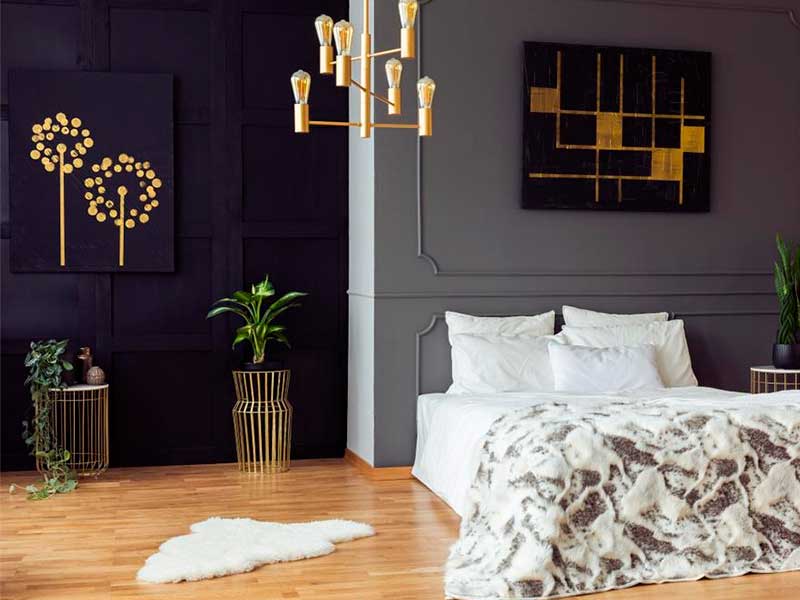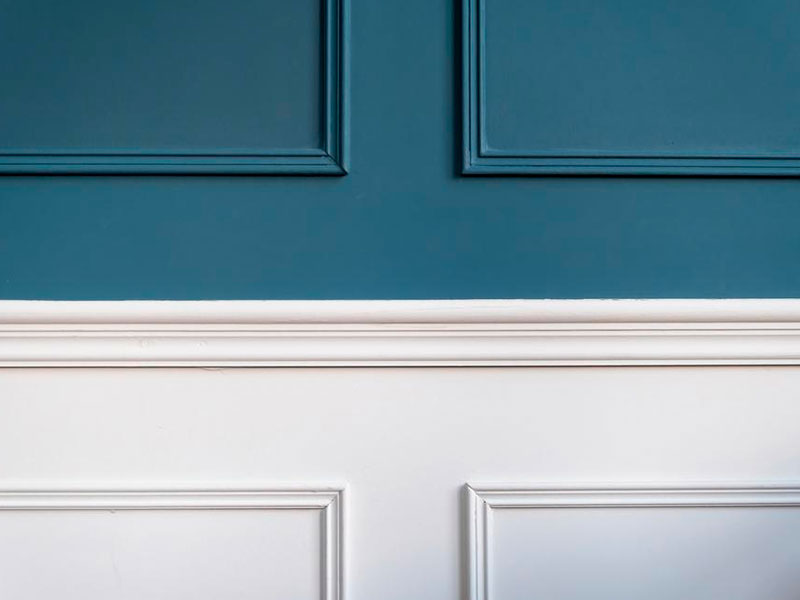How to Paint Wainscot? Steps and Tips on Wainscoting
Written by Milan Jara on 5th Apr 2022

Wainscoting is wood paneling that creates a border or lines the walls in a room. It is an attractive home improvement project, taking walls from bland to extraordinary. Installing them is easy. We offer some helpful tips on how to paint wainscoting.
Required Materials
This is a list of what you will need to paint your wainscoting.
- Plastic bags
- Paint roller
- Medium paintbrush
- Rag
- Paint
- Paint shield
- Small brush
- Painter’s tape
Steps to Paint Wainscoting
When painting your room, your wainscoting requires as much attention as the rest of the area. Here are some techniques as to how to best do this.
- Paint Your Baseboard. First, cover wall areas flush with the baseboards using painter’s tape. With a small paintbrush, go from the top of your baseboard panel. Paint downward with five to six short strokes. Smooth everything over with a single, even, long stroke. Consider a paint shield for a movable masker while painting along your floor using long brush strokes.
- Paint Your Paneling. Use similar applications while painting your paneling, but use either a paint roller or a medium paintbrush. Begin along the bottom and top edges where wainscoting meets your floor and wall. For vertical areas, paint indented panels/molding using an up and down paint stroke. For horizontal areas, use a back-and-forth stroke.
- Clean Up the Area. When done, thoroughly rinse roller covers/brushes in water until it runs clear. Store covers and brushes in plastic bags or hung up on hooks/nails to dry. Remove your tarp or drop cloth from your floor.
Selecting Your Color Scheme

There are several tips to consider when painting your wainscoting to provide the best feel for the room. What you choose will depend on whether you are going more traditional/classical or contemporary/minimalist.
- Determine Color Preference. You can use different shades in the same color palette, similar colors on the paint wheel, or opposing complementary colors to paint your wainscoting. These types are called monochromatic, complementary, and analogous.
- Monochromatic Colors Work Well for Modern Looks. Select this color scheme if you want something modern and clean. Painting the wainscoting the same color as your walls gives a less traditional feel and moves it to a contemporary spectrum. You can also go a few shades darker or lighter for more subtlety.
- Analogous Schemes Provide Contrast. This adds contrast to your room without the wainscoting being the focal point. For dark walls, use a light shade for molding. If pale, use a dark shade for your molding.
- Complimentary Colors Create Drama. If you want your wainscoting to stand out, use a complimentary color. It works well for picture-frame molding wainscoting over flat panels. Complementary schemes may become overwhelming when it becomes too much of an accent color.
- White Creates a Classic Look. Whether it is a subtle cream or crisp white, use this color to generate a traditional, classic feel. This works with panel molding or picture-frame molding.
- For Contrast, Use a Color Inside Your Frame Molding. Fill out flat spaces inside a picture-frame molding using the same color as the surrounding wall or that was used on the frame. You can fill it out with a new color that fits into your color scheme as well.
- Single Colors Can be Used for Basic Panels. You can incorporate single colors into a basic panel molding that covers the lower one-third of your room. Paint chair rails at the top of the wall paneling the same color using cream/white/analogous colors.
Common Painting Questions and Tips
There are many common questions when it comes to painting wainscoting. Many people want to know what paint works best, whether it needs to be thinned, etc. There are many theories about the best way to paint wainscoting, and we address the most common.
Should Wainscoting be Painted?
Painting it a similar color to the walls tones down a traditional feel making the look more contemporary. You can select a color two shades lighter/darker than your walls for a subtle difference.
Do Surfaces Need to be Primed Before Painting?
All MDP surfaces will require priming. You can use a water-based primer that dries quickly. Once the surface is sealed, you will need to do a light sanding to deal with raised fibers before painting.
Which is Better: Latex, Semi-Gloss, Satin Paint, or Oil?
Some people will inform you that oil is better than waterborne paint. It is durable and has fewer brush lines. Over the years, paint technology has dramatically changed. Now, experts feel the benefits of waterborne alkyd paints outweigh oil paints.
Oil paints have three detriments: they yellow with time, have a strong smell, and clean up involves using harsh chemicals. Good quality interior latex paint doesn’t yellow, lasts a long time, and self-levels, giving you a nice appearance overall.
For semi-gloss or satin paint, it comes down to a personal preference. If you plan on spraying the wainscoting panels, you can use a semi-gloss. If you’re brushing the panels, use a satin paint finish. Semi-gloss paint will show any imperfection like seams and nail holes, providing the appearance of not being well-prepped. The satin paint finish is more forgiving.
Which is Best: Brush or Roller?
A roller will allow you to paint the wall and into the crevices. Then, you can follow up with a dry brushing to even out thin/thick areas. It will allow you to whisk away any globs of paint - especially found in grooves – before drying to avoid visible drips.
Will the Paint Need to be Thinned?
It depends on the paint type. If it is thick, you may leave brush drag marks behind, which requires you to add an additive. It will enhance adhesions and penetration into the material and reduce the appearance of brush strokes.
How to paint wainscoting will depend on what brushes and paint you use. While there is some dispute on the best type of paint to use, it will boil down to personal preference. We provided you with basic tips to make painting wainscoting panels easier and provide a professional appearance.





